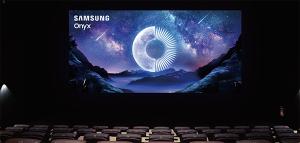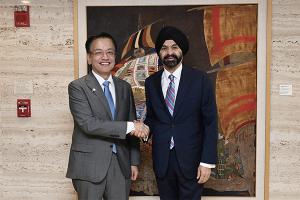 |
||
Literary painting holds many elements such as history, art, philosophy, science and literature. It is especially convincing when we see works of literary painting artist Sookja Ji. After a long teaching career, she has walked a path as an artist who said that literary painting emphasizes importance of knowledge and education as it has evolved alongside intellectual ability of the people who lived in the time.
 |
Meeting literary painting in Autumn
Ji held a solo exhibition at the Cheongju Museum of Art in Ochang from October 5 to 8 under the theme ‘the soul engraved in brushwork literary painting’. An invitation artist and a judge of the Grand Art Exhibition of Korea, she delivered glimpse of how ancestors learned and developed culture and knowledge to the appreciators at the exhibition this time covering from her signature crab series to changes of beautiful nature. Despite her age in the 80s, she has this sense of calling to spread this valuable cultural asset. Some of her notes read as follows:
“According to Cho Yong-jin’s How to Read Oriental Paintings, paper, brush, and ink also served as a defining element in Korean Oriental paintings due to their contribution to creating various allegorical characteristics of Oriental paintings. The six methods of painting include energy generation movement, golbeop-yongpil, suryu fan, management position, and transfer simulation. It is said that among the six methods, energy saengdong and bonebeopyongpil were given importance. The reason that ink is one of the important colorants is due to its vivid color and the implied meaning of ink, oil, and five colors. Ink and brush are unrivaled by any other tool in achieving consistency. When this ink exerts its characteristics as an ink to its full potential through a brush and rice paper, a mysterious scent of ink emerges. A single brushstroke written and drawn at once should demonstrate individuality rather than the overall idea of art, and the premise of formativeness rather than undulation. Rather than being an artist’s conflict, I enjoy it and try to use the flow and texture of the ink itself with a sense of weight, allowing me to see strange shapes in a stately style and freedom. “I want to show the unobstructed mooae of sweet brushstrokes in the flow of ink that comes from strong and weak lines when enjoying the thick and loose lines between brushstrokes, as if it is a dangerous play when striking nature in its own way as strong and fast lines pass by.”
 |
Her literati paintings are receiving a lot of attention for their storytelling that emphasizes formativeness through a more confident, fast, and lively movement of brush strokes using one-stroke and ink expressions. What makes this solo exhibition even more meaningful is that her old friends gathered together for the first time in a long time. Some even shed tears, saying they could see before their eyes the image of her struggling even at her old age to complete these numerous works. The sight of them looking back and reminiscing about the times when they were all young and green, and appreciating the literary paintings of their old friends was also very memorable and beautiful. It was the beauty of a clear autumn day.
지윤석 기자 jsong_ps13@naver.com







